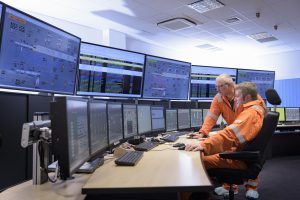The annual global energy efficiency spending has to increase to $550 billion by 2035, says International Energy Agency (IEA) in their World Energy Outlook 2014. This will need new models sources of financing, from banks and capital markets.
On the face of it, an energy efficiency project sounds temptingly simple. In reality, however, there is a lot of groundwork to be done by the energy efficiency contracting company to market its solutions and expertise. Initiation is the crucial phase, execution the core phase and monitoring the command phase of such projects.The evaluation of energy efficiency projects is becoming an increasingly vital area of economic consideration in today’s complex business environment. Customers are cost-savvy and want to clearly weigh their financial commitment against projected benefits. They all agree to energy efficiency in principle. In reality, however, they want to be strongly convinced on return on investment (ROI) before going green on an Energy Efficiency project.
Energy efficiency projects have to deliver what they promise – and convince customers on what they promise. The customer has to invest in new equipment and technology – for control, measurement, analysis, lighting, heating, ventilation and so forth. There are also related professional services and training requirements.
ROI is a broad concept going beyond just cost savings. The benefits can be tangible or intangible. Tangibles spell savings in energy, money, operations, material, personnel, time etc. Intangible benefits result in improved comfort, higher satisfaction, productivity, goodwill and, above all, sustainability.
(Image courtesy: IEA)
Capital Budgeting is a key aspect of the customer’s decision to go for energy efficiency projects. As such projects involve substantial investment, it is important to be familiar with the customer’s financial decision-making process and behavior. Before engaging any capital on a project, the customer needs to know the payback period. This is the time it will take to recover the investment. If capital is borrowed, payback is arrived at after discounting interest repayments from cash flows to arrive at a realistic calculation.
The energy efficiency contracting company helps create project cash flows for the customer, considering CAPEX and OPEX along with inward cash flows, translated by energy efficiency savings. Several analytical methods like Payback Period, Net Present Value and Internal Rate of Return are used to assist the customer in their conscious purchasing decision.
The confidence and credibility of the energy efficiency contracting company gets established in the eyes of the customer. They experience sustainability as a practice implemented in their activity, reaping economic and ecological dividends.
Energy efficiency is the only game where everyone is a winner.




Conversation
smart and simple explaining way , so good